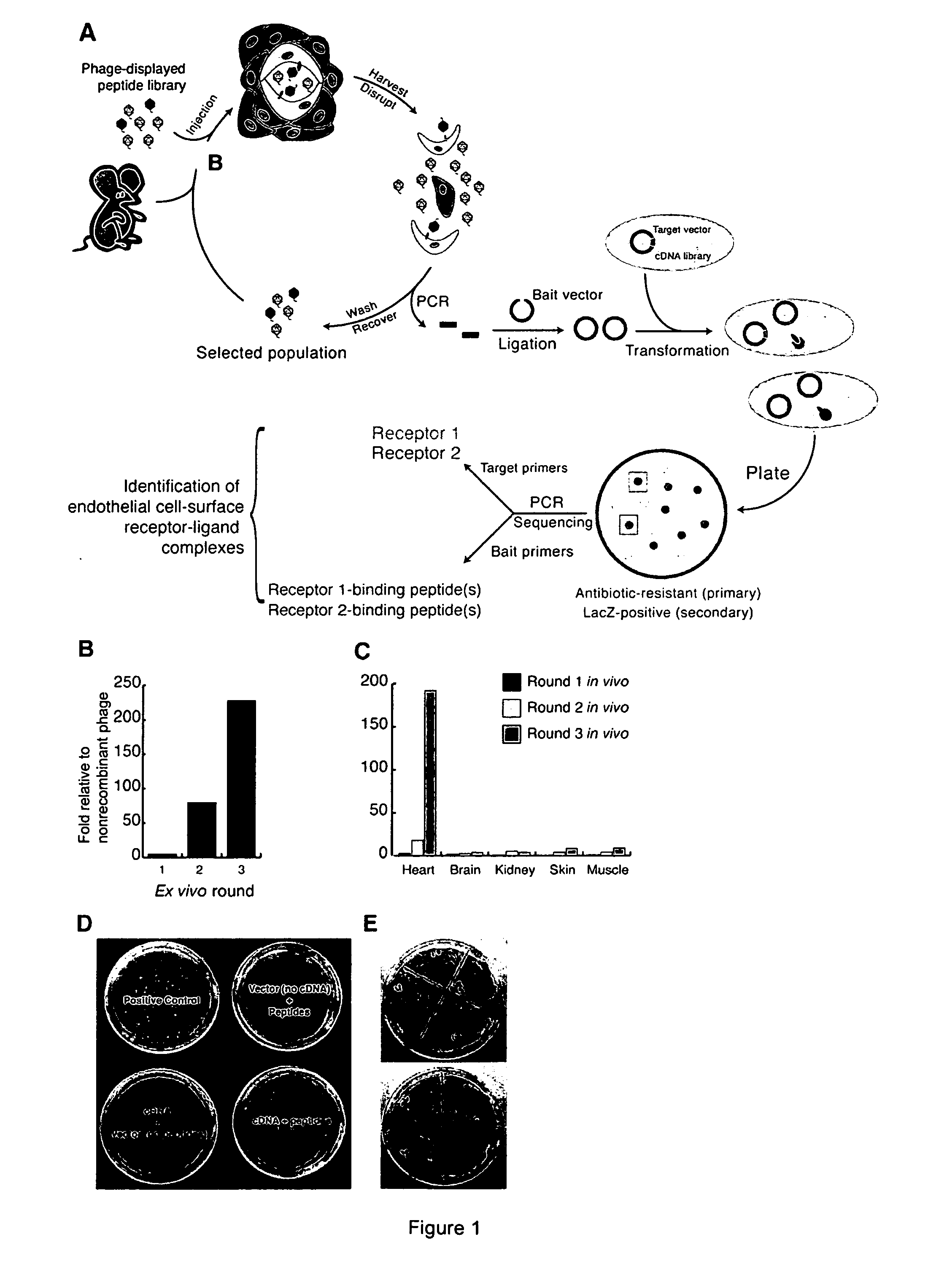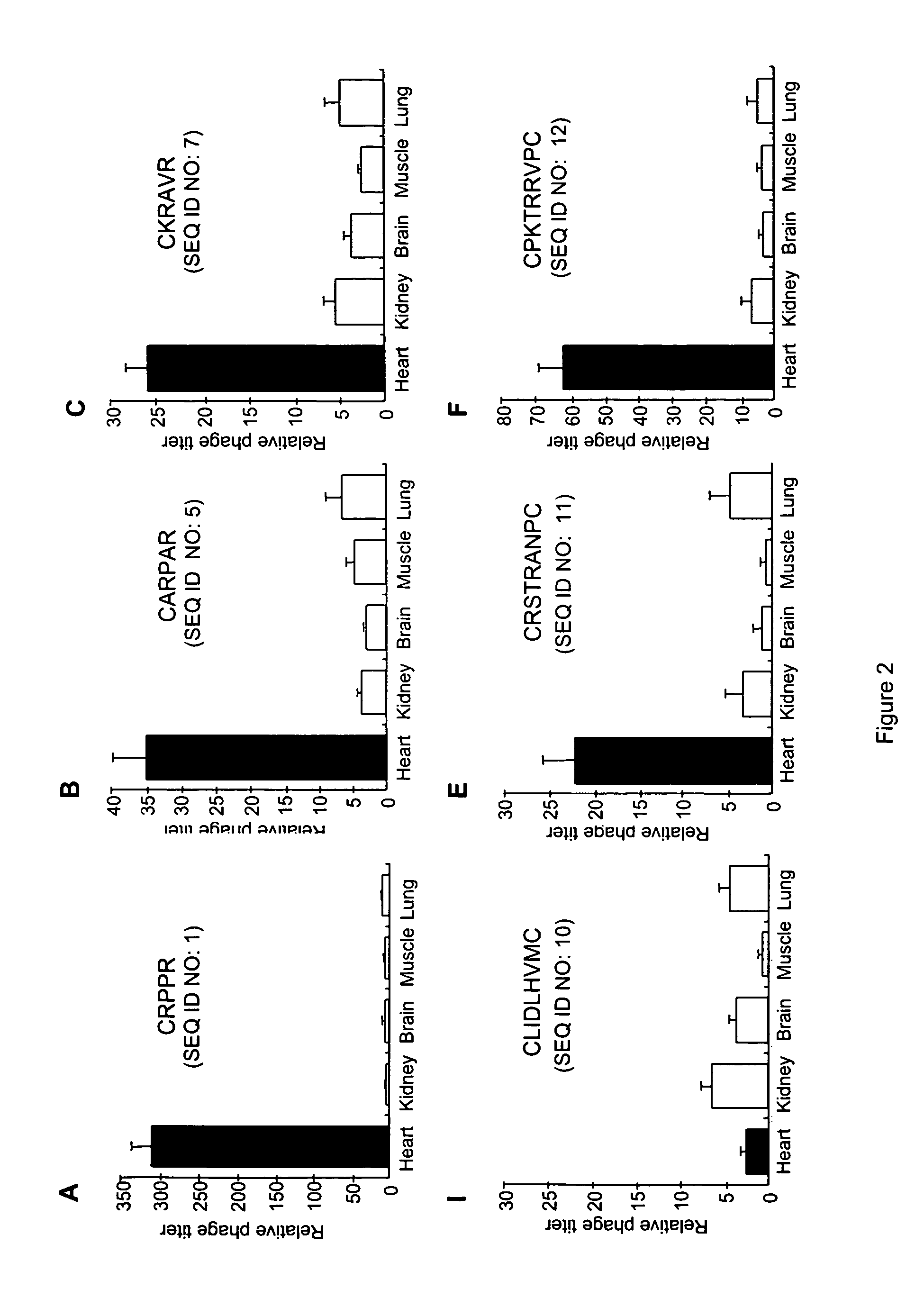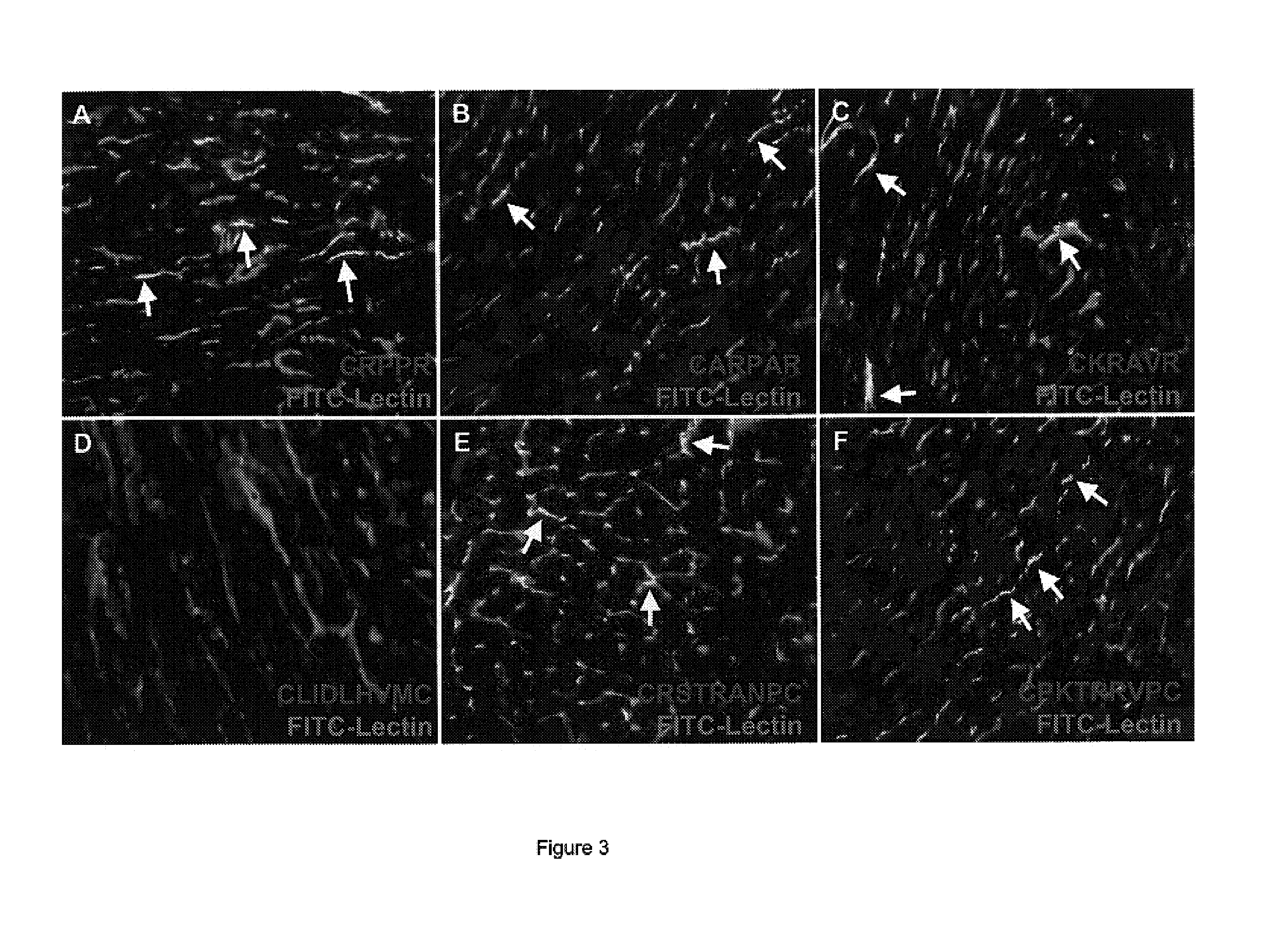Peptides that selectively home to heart vasculature and related conjugates and methods
a technology of peptides and vasculature, applied in the field of molecular medicine and drug and gene delivery, can solve the problems of fibroblast growth, severe side effects, and unsatisfactory side effects
- Summary
- Abstract
- Description
- Claims
- Application Information
AI Technical Summary
Benefits of technology
Problems solved by technology
Method used
Image
Examples
example i
Identification of Peptides that Selectively Home to Heart Vasculature and Cognate Receptors for the Homing Peptides
[0175]This example describes the use of ex vivo and in vivo phage selection for identification of peptides that selectively home to heart vasculature, combined with bacterial two-hybridization assays for identification of cognate receptors for the homing peptides.
[0176]Ex vivo phage selection for enrichment of cardiac endothelial cells was performed on cell suspensions obtained from murine heart tissue using anti-CD31 magnetic beads for isolation of vascular endothelial cells. A 230-fold enrichment in ex vivo binding to heart cells as compared to non-recombinant phage was observed following three rounds of ex vivo selection (FIG. 1B). Subsequent in vivo selection for homing to the heart resulted in a phage pool that homed to the heart in vivo with an increase of nearly 200-fold relative to the homing of non-recombinant phage. Furthermore, the ex vivo / in vivo selected ph...
example ii
Receptor-Peptide Pairs and Peptide Heart-Homing Activity
[0184]This example describes the membrane or cell surface expressed proteins which were identified as putative receptors for heart-homing peptides by bacterial two-hybrid analysis with a peptide pool displaying heart homing activity.
Receptor Clone 5
[0185]As summarized in Table 1, receptor clone 5 represents the carboxy-terminal 92 amino acids of heart LIM-protein (HLP), also designated cysteine-rich protein 2 (CRIP2) and ESP1. HLP, which is expressed in the vascular heart (Yu et al., Mech. Dev. 116:187-192 (2002)) is a LIM domain-containing protein having homology to Crp-1 (Karim et al., Genomics 31:167-176 (1996); and van Ham et al., Genes Cells 8:631-644 (2003)). Of the five positive colonies from the two-hybrid analysis with the HLP clone, three cognate peptides were identified: CRPPR (SEQ ID NO: 1) was present twice, CGRKSKTVC (SEQ ID NO: 2) once and CGNQVDSRC (SEQ ID NO: 3) twice. After cloning these peptides into the T7Se...
example iii
Phage-Displayed Heart Homing Peptides Localize to Heart Vasculature
[0193]This example demonstrates that the disclosed peptides which selectively home to heart vasculature specifically bind receptors which are expressed in vivo by heart vasculature.
A. Phage-displayed Heart Homing Peptides Co-localize with a Vascular Marker
[0194]Further characterization was performed on the five most efficient homing peptides, as indicated by the fold-selectivity summarized in Table 1, and their putative receptors. These homing peptides were analyzed for the ability to selectively bind heart endothelia in vivo and for specific binding to their putative receptors, which also were analyzed for expression in heart endothelia. Each of the phage-displaying a particular homing peptide was individually injected intravenously into mice with fluorescein-conjugated tomato lectin, a blood vessel marker. Localization of phage with anti-T7 antibody showed that phage displaying peptide CRPPR (SEQ ID NO: 1), CARPAR ...
PUM
| Property | Measurement | Unit |
|---|---|---|
| shrinkage | aaaaa | aaaaa |
| diameter | aaaaa | aaaaa |
| temperature | aaaaa | aaaaa |
Abstract
Description
Claims
Application Information
 Login to View More
Login to View More - R&D
- Intellectual Property
- Life Sciences
- Materials
- Tech Scout
- Unparalleled Data Quality
- Higher Quality Content
- 60% Fewer Hallucinations
Browse by: Latest US Patents, China's latest patents, Technical Efficacy Thesaurus, Application Domain, Technology Topic, Popular Technical Reports.
© 2025 PatSnap. All rights reserved.Legal|Privacy policy|Modern Slavery Act Transparency Statement|Sitemap|About US| Contact US: help@patsnap.com



